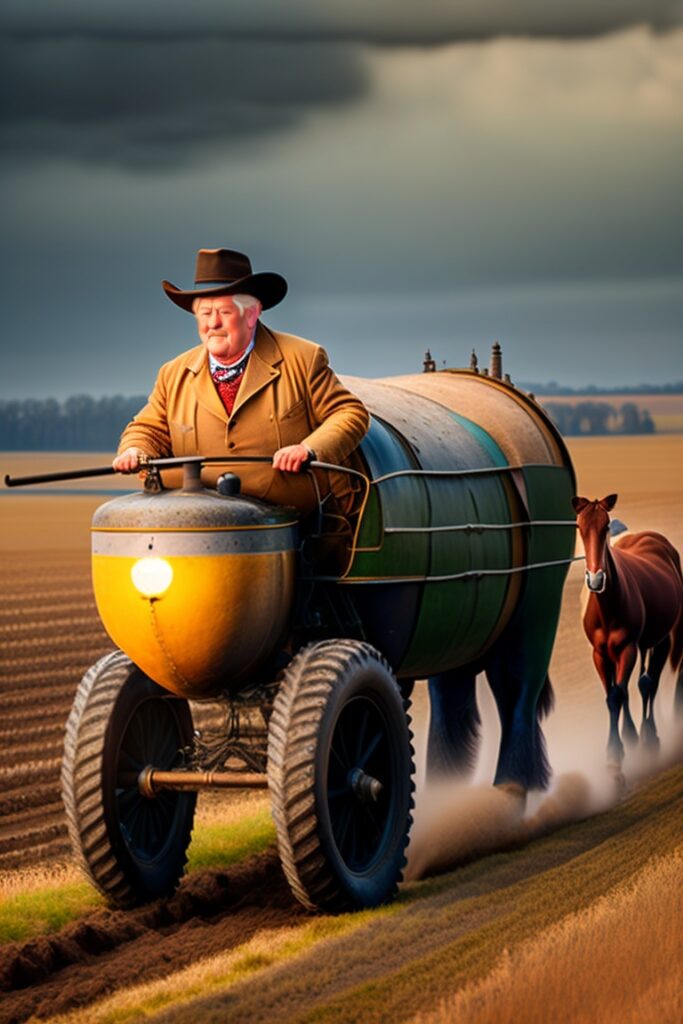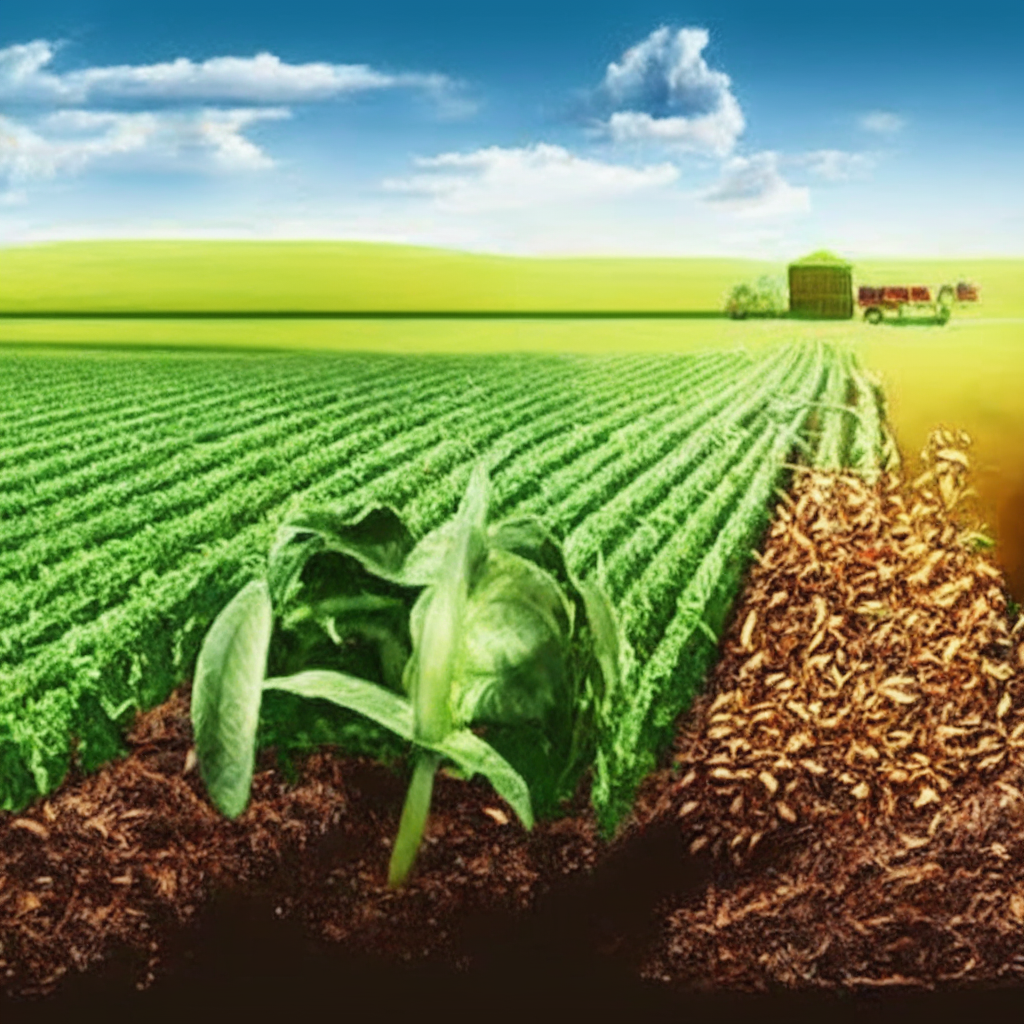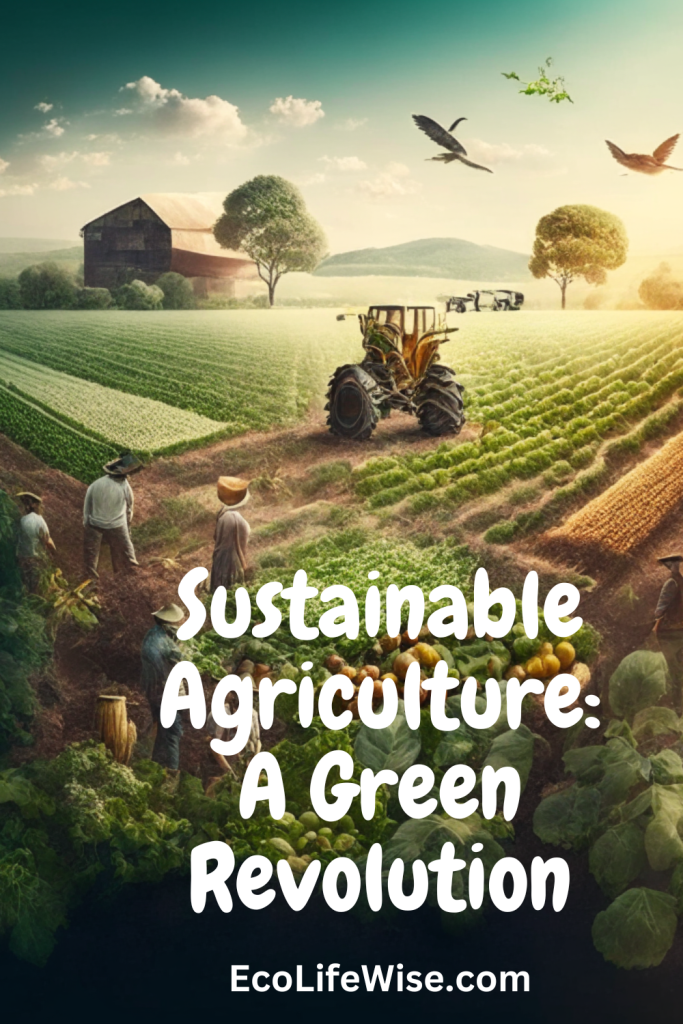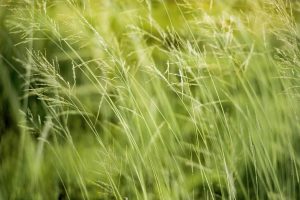Introduction to Sustainable Agriculture
What is Sustainable Agriculture?
Hey there, folks! As a fervent enthusiast and advisor in the field, I’d like to dive into sustainable agriculture with you. So, what’s it all about? Sustainable agriculture is a method of farming that aims to meet society’s present food and textile needs without compromising the ability of future generations to meet their own needs. Sounds cool, right?
The Need for Sustainable Agriculture
With the world’s population projected to reach 9.7 billion by 2050, the demand for food is rising. That’s where sustainable agriculture comes into play. It’s a way of saying, “Hey, we can feed the world and protect the planet at the same time!”
The History of Sustainable Agriculture
You might think of sustainable agriculture as a relatively new concept, but it has ancient roots. Early farmers practiced a form of sustainability through crop rotation, a technique still used today. Fast forward to the industrial revolution, and we see agriculture taking a different path by introducing synthetic fertilizers and mechanization.

The Green Revolution
Then came the “Green Revolution” of the mid-20th century brought about high-yielding crop varieties and increased use of fertilizers and irrigation systems to combat food shortages. Yet, while these advances increased food production, they also led to environmental and social issues, making us reassess our approach to farming.
Sustainable Agriculture Today
As we know it today, sustainable agriculture emerged in the late 20th century in response to the realization that we needed to balance productivity with preservation. This modern green revolution is all about finding ways to produce food that sustain our communities and our planet, both now and in the future.
The Pillars of Sustainable Agriculture
Here are the three main pillars of sustainability:
Environmental Sustainability
Remember the old saying, “We do not inherit the earth from our ancestors; we borrow it from our children”? That’s the essence of environmental sustainability. It’s all about reducing water usage, minimizing soil erosion, and limiting the use of harmful fertilizers and pesticides.
Economic Sustainability
Here’s a bit of a curveball. Did you know sustainable agriculture can also be good for the wallet? Economic sustainability ensures farmers are profitable and the supply chain is resilient to shocks. It’s like killing two birds with one stone but in a very eco-friendly way!
Social Sustainability
And we must remember the people, can we? Social sustainability in agriculture focuses on maintaining and improving rural livelihoods, worker health and safety, and community resilience. It’s about fostering a symbiotic relationship between farmers, consumers, and communities.
Benefits of Sustainable Agriculture
For The Environment
From reducing greenhouse gas emissions to promoting biodiversity, sustainable agriculture is like a superhero for the environment. Who wouldn’t want that?
For The Economy
Economically, sustainable farming can boost local economies, increase farmer profitability, and reduce dependency on non-renewable resources. It’s a win-win situation!
For Society
Sustainable agriculture ensures food security and promotes healthier diets. It’s like a societal wellness package, straight from Mother Nature.
Implementing Sustainable Agriculture
Crop Rotation
Crop rotation is one way to do it. It’s like giving the land a chance to breathe and reset!
Organic Farming
Or how about going organic? Organic farming rejects synthetic fertilizers and pesticides, instead opting for natural methods of composting and biological pest control; ultracompost, take a bow! It’s like choosing a salad over a cheeseburger for the Earth!
Agroforestry
And then there’s agroforestry, the practice of integrating trees, crops, and livestock on the same plot of land. This strategy can provide habitat for wildlife, enhance soil health, and even increase farm profitability. Who said trees and crops couldn’t be best friends?
The Finer Details of Sustainable Agriculture Practices
Permaculture
Speaking of additional methods, let’s dive deeper. Permaculture mimics the relationships found in natural ecosystems to create a self-sustaining system. Picture a farm that functions like a forest, where every element works harmoniously. Isn’t that a beautiful image?
Hydroponics and Aquaponics
Then there are hydroponics and aquaponics, futuristic farming methods that sound straight out of a sci-fi movie. Hydroponics is the process of growing plants in water without soil. At the same time, aquaponics combines this with aquaculture (raising aquatic animals) in a symbiotic environment. Imagine being able to farm salmon and lettuce in the same system. Talk about innovation!
Challenges and Solutions
Facing the Challenges
While the journey to sustainable agriculture is promising, it comes with challenges. From the high cost of transition for farmers to the need for more research and education, the road ahead is a steep climb. But hey, who said making a difference was easy?
Proposing the Solutions
But guess what? We can overcome these challenges. We can propel the green revolution forward by providing financial support to farmers, investing in research, and promoting education about sustainable practices. Let’s turn these challenges into stepping stones!
The Role of Technology in Sustainable Agriculture
Did you know that sustainable agriculture also has a techy side? From satellite-guided tractors to drones monitoring crop health, technology is revolutionizing how we farm. It’s like farming got an upgrade!
Precision Agriculture
Take precision agriculture, for instance. This technology uses satellite imagery and GPS tracking data to optimize crop yields and reduce waste. It’s like giving farmers a bird’s eye view of their fields!
Blockchain Technology
Or consider the potential of blockchain technology. By providing a secure and transparent way to track the journey of food from farm to table, blockchain can promote fair trade and help consumers make more informed choices. It’s like a backstage pass to the food industry!
Leading Countries in Sustainable Agriculture
Now, let’s take a trip around the world to see who’s making waves in sustainable farming.
Sweden
Sweden is a prime example. Known for its environmental consciousness, the country has rigorous standards for organic production. It aims to become fossil fuel-free by 2040. Swedish farmers are big on crop rotation, green manure, and biological pest controls, making the country a leader in sustainable farming practices.
The Netherlands
Next stop, the Netherlands! This small country is the world’s second-largest exporter of food by value, behind only the United States. How do they do it? The Netherlands produces more with less by embracing sustainable techniques like precision farming and vertical farming.
Cuba
Cuba presents an interesting case. After the fall of the Soviet Union in 1991, Cuba lost access to chemical fertilizers and pesticides. This forced the country to shift to organic farming methods. Today, urban gardens called “organopónicos” can be found across Cuban cities, supplying fresh, organic produce to the local population.
Challenges Leading to Sustainable Agriculture
Each of these countries faced unique challenges that led them to embrace sustainable agriculture. For Sweden, it was a commitment to environmental preservation. The Netherlands needed more space and efficient production. For Cuba, it was geopolitical change and necessity.
These countries show that sustainable agriculture is possible and immensely beneficial. They serve as examples to the rest of the world, proving that we can transform how we produce our food with commitment, innovation, and resilience.
The Impact of Sustainable Agriculture on Climate Change
Now, let’s talk about the elephant in the room: climate change. With agriculture responsible for nearly a quarter of all greenhouse gas emissions, sustainable farming practices can significantly mitigate global warming.
Carbon Sequestration
Sustainable agriculture practices like agroforestry and cover cropping can sequester carbon, effectively pulling CO2 out of the atmosphere and storing it in the soil. It’s like the earth is doing its part in combating climate change!
Reducing Methane Emissions
And let’s remember methane, a potent greenhouse gas. Sustainable agriculture can significantly cut methane emissions by promoting responsible livestock management and reducing food waste. Who knew farming could help cool the planet?
Conclusion
Sustainable agriculture, steeped in history and practiced increasingly around the globe, offers a promising solution to many of our current environmental, economic, and social challenges. Whether it’s the farmer shifting to organic farming, the tech innovator developing intelligent farming solutions, or you and me choosing sustainably produced products, every step counts. So, let’s embrace the green revolution and create a sustainable future together!
In the end, sustainable agriculture is more than just a farming practice. It’s a commitment to our future generations, our planet, and ourselves. By embracing sustainability, we’re not just growing crops; we’re growing hope. So, are you ready to join the green revolution?
A Call to Action
Finally, it’s important to remember that sustainable agriculture is not just the responsibility of farmers; it’s a collective effort. By supporting local and organic produce, reducing food waste, and advocating for sustainable policies, we can contribute to the green revolution. So, are you ready to make a difference?
FAQs
What are some other methods of sustainable agriculture?
There are numerous methods, including permaculture, hydroponics, and aquaponics, each with unique benefits and challenges.
How can I support sustainable agriculture?
You can support sustainable agriculture by buying local and organic produce, reducing food waste, and even starting your own backyard garden!
Is sustainable agriculture more expensive?
While sustainable farming practices can be more costly upfront due to the transition, they often pay off in the long run through increased soil fertility and reduced input costs.
Can sustainable agriculture feed the world?
Yes, with the right support and investments, sustainable agriculture has the potential to meet global food demands while preserving our environment.
What is the role of technology?
Technology is crucial in sustainable agriculture, from precision farming techniques that optimize resource use, to processes for extracting sustainable palm oil, to apps that connect farmers directly with consumers.
What role does sustainable agriculture play in climate change?
Sustainable agriculture can help mitigate climate change by reducing greenhouse gas emissions and promoting carbon sequestration in the soil.
What is the role of permaculture in sustainable agriculture?
Permaculture in sustainable agriculture is about creating a self-sustaining farm ecosystem that mimics relationships in nature.
How can I make my farm more sustainable?
You can make your farm more sustainable by implementing crop rotation, organic farming, agroforestry, and precision farming.
What is the impact on local communities?
Sustainable agriculture can boost local economies, create jobs, and promote community cohesion.
What is the history of sustainable agriculture?
Sustainable agriculture has ancient roots, with early farmers practicing crop rotation. The concept as we know it today emerged in the late 20th century as a response to the environmental and social issues caused by modern agricultural practices.
Which countries are leading in sustainable agriculture?
Countries like Sweden, the Netherlands, and Cuba are the leaders, each with unique approaches and circumstances that led them to embrace sustainable practices.
Why did these countries turn to sustainable agriculture?
These countries experienced various challenges such as environmental preservation (Sweden), space and efficiency needs (the Netherlands), and necessity due to geopolitical changes (Cuba). Each country’s unique circumstances led them to develop innovative solutions that have made them leaders in sustainable farming practices.
How can other countries learn from these leaders?
Other countries can learn from these examples by studying their approaches, understanding the challenges they overcame, and adapting their sustainable practices as appropriate. It’s about learning, adapting, and innovating for a more sustainable future.
How can individuals contribute?
Individuals can contribute by supporting local and organic farmers, reducing food waste, and advocating for policies that support sustainable practices. Every small action adds up to make a big difference.






Pingback: Composting 101 - Eco Life Wise
Pingback: Solar 5e: Harnessing the Sun's Energy Like Never Before - Eco Life Wise
Pingback: Ultracompost: The Future of Organic Farming - Eco Life Wise
Pingback: Sustainable Architecture: A Guide to the Future of Design
Pingback: How to Make Compost: A Guide to a Greener Garden
Pingback: Eco Friendly Companies: Meet the Eco Super Heroes
Pingback: Why Recycle? Your Ultimate Guide to the Big Green Reason
Pingback: Three Pillars of Sustainability: A Guide to a Better Future
Pingback: Living Off the Grid Communities: A Practical Guide
Pingback: Sustainable Jewelry: The Future of Ethical Fashion - Eco Life Wise
Pingback: Eco Friendly Phone Cases: Smart For a Sustainable Lifestyle
Pingback: Composting Toilets: From Waste to Wonder and Fertilizer Gold!
Pingback: Sustainable Lingerie: An Eco Friendly Revolution in Your Drawer | Eco Life Wise
Pingback: What Is Sustainability? Unlocking the Power to Transform Our World
Pingback: Eco Friendly Laundry Detergent: Why and How to Make the Switch
Pingback: Why Is Biodiversity Important? Earth's Ecological Wealth | Eco Life Wise
Pingback: What is Permaculture? A Guide to Our Greener Future | Eco Life Wise
Pingback: Sustainable Palm Oil: Championing a Greener Planet
Pingback: Recycling for Kids: A Journey Towards a Sustainable Future
Pingback: Organic Spices: Nature's Flavor Gems | Eco Life Wise
Pingback: Solar Water Pump: Sustainable Water Solutions | Eco Life Wise
Pingback: Benefits of Renewable Energy: The Future is Bright (and Windy!) | Eco Life Wise
Pingback: Sustainable Fabrics: Charting the Course for Eco-Friendly Fashion
Pingback: Pros and Cons of Biofuels: A Comprehensive Deep Dive | Eco Life Wise
Pingback: Climate Change Reality: The Unvarnished Truth We Can't Ignore | Eco Life Wise
Pingback: Sustainable Development Goals: Steps to Saving the World
Pingback: Causes of Global Warming: The Unsettling Reality | Eco Life Wise
Pingback: Sustainability vs Resilience: Latest Duel of the Eco-Titans! | Eco Life Wise
Pingback: Climate Change: The Facts That Will Make Your Jaw Drop! | Eco Life Wise
Pingback: Net-Zero Revolution: How North Carolina is Chasing Carbon Neutrality | Eco Life Wise
Pingback: Why Is Organic Farming Considered More Sustainable? | Eco Life Wise
Pingback: How Can I Reduce My Carbon Footprint? 8 Simple Ways | Eco Life Wise
Pingback: What Is The Greenhouse Effect? | Eco Life Wise
Pingback: Deforestation and Climate Change: 7 Remarkably Simple Links
Pingback: What Are The Dangers Of Using Chemical Pesticides? 10 Vital Factors | Eco Life Wise
Pingback: Sustainable Development: 10 Bold Approaches | Eco Life Wise
Pingback: Why Is Sustainable Agriculture Important: 10 Vital Reasons | Eco Life Wise
Pingback: Why Is Sustainable Agriculture Important: 10 Simple But Vital Reasons | Eco Life Wise
Pingback: What Is A Sustainable Diet? 10 Factors to Consider | Eco Life Wise
Pingback: How Does Meat Consumption Impact The Environment? 7 Powerful Ways | Eco Life Wise
Pingback: How Can I Encourage My Community To Be More Eco-friendly? | Eco Life Wise
Pingback: What Are The Advantages Of Compostable Packaging? | Eco Life Wise
Pingback: How Does Afforestation Help The Environment? | Eco Life Wise
Pingback: What Is A Vegan Lifestyle And How Does It Benefit The Environment? | Eco Life Wise
Pingback: How Do I Reduce Waste In My Kitchen? | Eco Life Wise
Pingback: What Is A Vegan Lifestyle And How Does It Benefit The Environment? | Eco Life Wise
Pingback: What Is A Vegan Lifestyle? 10 Definitive Factors | Eco Life Wise
Pingback: How Can We Protect And Restore Biodiversity In Urban Areas? | Eco Life Wise
Pingback: Why Is Reducing Meat Consumption Beneficial For The Planet? | Eco Life Wise
Pingback: Organic Olive Production Manual Paperback Review | Eco Life Wise